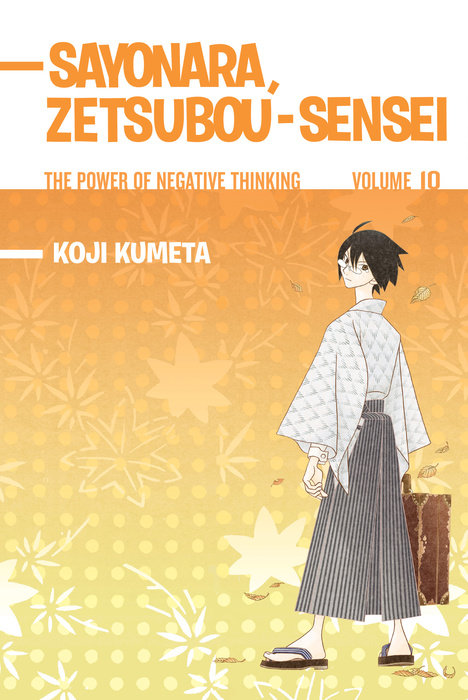Manga Review: Sayonara, Zetsubou-Sensei Volume 10 by Koji Kumeta
When Nozomu Itoshiki, a man whose very name can be misread as “despair”, attempts to hang himself from a tree, he’s saved/nearly killed by Kafuka Fuura, an insanely cheerful and optimistic schoolgirl. Since he’s still alive, Nozomu decided to show up at his new job the next day–teacher to a class of weirdos, including Kafuka.

Each member of the class has a punny name, and a quirk to go with it, from stalking through communicating only by email to being an illegal immigrant. My personal favorite is Nami Hito, whose name in Japanese order becomes “hitonami”, “normal person” and whose quirk is that she’s painfully normal and average. In most of the chapters, Nozomu goes off on a rant about some aspect of Japanese culture or life in general which has driven him to despair.
The class helps demonstrate various examples of the theme in question, sometimes with the help of the other members of the Itoshiki family, who are also bonkers in punny ways.
In this volume, we look at three-way standoffs, promoting yourself through self-PR, unnatural history and its preservation, “May Sour” (because the school and business year begin in April in Japan, this is the sensation of finding out your new position isn’t what you hoped), profiting from disaster, decision paralysis leading to bizarre third choices, things your parents don’t know (from a pun on what Americans call “wisdom teeth”), entitlement to gratitude, soft landings, and getting distracted from the main point (which chapter never gets back to the original plot.)
There’s also bonus material such as an advertisement for a magical girl version of the manga, nonsensical blog entries, and end notes on some of the many, many in-jokes.
The art is clear, though short on backgrounds; the fashions, and especially the older Japanese styles, are well done. Many of the girls do look a lot alike absent their hairstyles and accessories (this becomes a plot point later on) so people new to the series may have trouble telling some of them apart.
While a basic knowledge of Japanese culture will allow the reader to understand the larger jokes, there’s also massive amounts of fast-paced, tiny print references that I suspect even many Japanese readers will have to look up fifteen years later. Also, the English translation only went up to Volume 14, so the ending may be hard to find legally.
Content note: Suicide is constantly mentioned, and usually played for laughs. Other dark topics are also subjects of humor. There’s a fair amount of male-oriented fanservice, both played straight and twisted.
Recommended to fans of weird humor and commedia dell’arte.
And here’s a theme song from one of the anime adaptation seasons!

